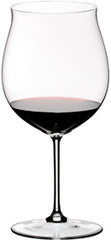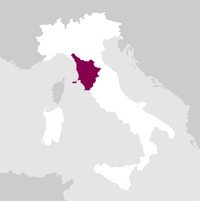描述
The Chianti Classico Castello di Ama San Lorenzo takes its name from the beautiful valley overlooked by the eighteenth-century villas. Undoubtedly the perfect photograph of the uniqueness of our territory. And 'the GREAT SELECTION of Castello di Ama. It 'made from grapes from old systems and those who, having been implanted for at least ten years, show the collection to have reached a perfect maturity level of polyphenols. Undoubtedly the perfect photograph of the uniqueness of our territory. Great selection is an important step in the name of the Chianti Classico and becomes the top of the pyramid of quality of Chianti Classico.
奖项
详情

香水

颜色

味道
服务于:
18 - 20 °C.
长寿:
10 - 15 years
醒酒时间:
1 hour

搭配
- 创办年份: 1976
- 酿酒师: Marco Pallanti
- 生产的瓶子: 320.000
- 公顷: 75
To date, Castello di Ama owns and manages about 75 hectares of vineyards and 40 hectares of olive groves, relying on the work of more than 60 people. The role of general manager and oenologist is held continuously by Marco Pallanti, who served, between 2006 and 2012, as President of the Chianti Classico Consortium, bringing the contribution of the creation of the 'Gran Selezione' category with the aim of highlighting the extraordinary quality and diversity of the region's wines. 阅读更多


| 名称 | Castello di Ama Chianti Classico Gran Selezione San Lorenzo 2013 |
|---|---|
| 类型 | Red still |
| 葡萄酒名称 | Chianti Classico DOCG |
| 年份 | 2013 |
| 容量 | 0,75 l |
| 酒精度 | 13.0% 按体积 |
| 葡萄品种 | 80% Sangiovese, 10% Malvasia Nera, 10% Merlot |
| 国家 | Italy |
| 产地 | Tuscany |
| 供应商 | Castello di Ama |
| 气候 | The numerous and frequent rains characterized the first two months. Temperatures began to be spring from mid-March. The month of April and the first two weeks of May were exceptionally rainy and rather cold. The vegetative delay induced by low temperatures, however, has averted the danger of disease. June has developed into a crescendo of temperatures and sunny days that have introduced the summer heat of July. The month of August was quite variable with temperate days, some rainy days of scorching heat but with cool nights. The harvest began on September 6th with the early varieties, merlot and after a week, toward the end of the month, the Sangiovese. |
| 每公顷产量 | Great selection is an important step in the name of the Chianti Classico and becomes the top of the pyramid of quality of Chianti Classico. The wines bearing this name is a guarantee for the consumer in terms of origin and quality. In fact, the production regulations imposed on them that the grapes are fully manufactured in the company and that the wine is put on the market after 30 months after the harvest |
| 收获 | Between September 28 and October 8, were collected manually in small boxes of 12 kg capacity, about 1300 q.li grapes. |
| 发酵温度 | After a ride on the table of choice, the grapes, crushed and de-stemmed, are passed to ferment, variety is in stainless steel tanks at a temperature of about 30-32 degrees. During fermentation, the must was refitted several times a day |
| 发酵 | The maceration, which lasted for about 21-23 days. After racking 900 hectoliters of wine have malolactic fermentation |
| 陈酿 | After assembly, the wine was in barrels, 20% first-pass and the rest used, where he remained in aging for about 12 months. |






